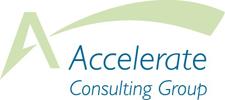By Kevin O’Connell, Founder, Accelerate Consulting Group
Even the most effective sales compensation plan designs can be destined for failure if they are not properly communicated to the sales team.
Picture this: You’ve just expended a lot of time and energy developing a new sales compensation program. Perhaps you’ve even created a design team of key stakeholders (e.g., sales management, HR, Finance, IT) to consider design alternatives and select an incentive approach to model and test. After much debate and discussion, the new plan is approved.
Now it’s time to implement and communicate. By this time, the design team may have already migrated back to their day jobs, and much of the excitement and enthusiasm for the new plan may have dissipated.
Here are a few suggestions to ensure your new sales compensation plan is effectively rolled out to the sales team with a clear, consistent, and compelling message.
- Communication strategy or approach should be established up front as part of the new plan’s design process. This ensures that time and resources will be dedicated to a successful new plan launch. An effective communications strategy includes identifying who delivers the message, what materials are necessary (see below), where the communication takes place, and when the launch is completed.
- Present clean, concise plan documents with illustrations on how the new plan works. The plan document should contain all the details a participant needs to know about the program. Plan participants typically are required to acknowledge in writing that they’ve received and reviewed the plan.
- Include Administrative Guidelines that establish the rules, terms and conditions for how the plan is managed. Administrative guidelines are typically an appendix to the plan document. Guidelines elaborate how to handle specific situations (e.g., split sales credit, claw backs, terminations, new hires, etc.). The process for resolving any disputed incentive payouts should also be included.
- Term Sheets are typically a one-page summary of the plan with supporting details. These are used by finance to provide oversight and as a ‘cheat sheet’ for plan administrators (along with the plan documents).
- Roll Out slides are an effective way to introduce a new plan. These are typically used in a higher-level presentation, linking the new plan to key strategic initiative and sales objectives. This presentation should provide the sales force with the rationale for the new plan, along with highlights of the new design.
- Sales people want to be sold. A key goal of the rollout is to create excitement about the new plan. The presentation is delivered either by a senior sales executive to the entire team (for example, at a national sales meeting), or by sales management in local regional / district meetings. We have also seen combination presentations work effectively for large sales forces, with senior sales leaders presenting to the entire team, followed by local region/district breakout meetings to go over the new plan in more detail, with time to answer questions.
- Calculators. Use either an Excel model or CRM-based tool that enables sales people to determine how much incentive they earn based on sales results. Give a sales person a tool to calculate how much they can earn, and they will use it. It’s also an excellent way to reinforce what the new plan is directing the sales team to do.
From our experience, we know many clients focus on the design of a new sales compensation program, only to rush the communication effort. Creating a communication strategy at the front end of the design process is the best way to avoid bungling the rollout. Plan design and communication both require strategic thinking and planning.
Accelerate Consulting Group’s mission is to help clients improve sales performance by:
-Creating strong, coherent alignment between strategy, the drivers of organizational and sales effectiveness, and an organization’s people.
-Focusing on execution – the tactics and capabilities that will support change and create success.
-Developing practical solutions that can be implemented to drive results.


